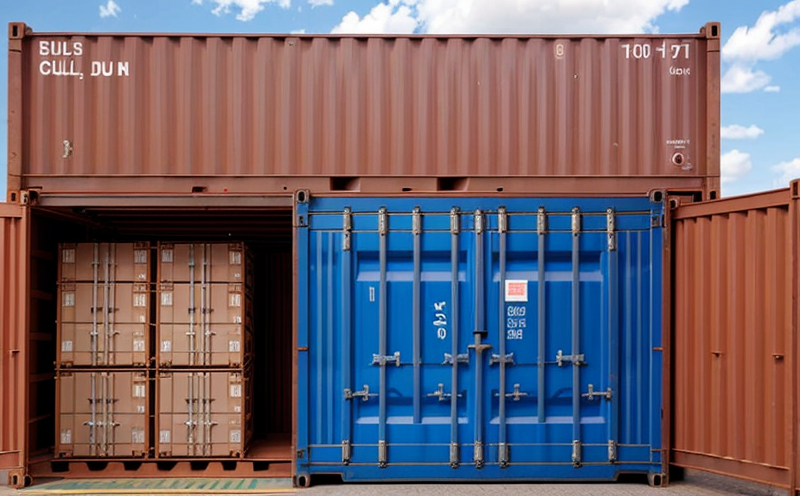USP Peel Strength Testing of Blister Packs
The United States Pharmacopeia (USP) Packaging and Container Closure Systems for Medicines chapter 615 outlines the requirements for ensuring that packaging and container closure systems are designed, manufactured, and used in a manner that protects the integrity and quality of medicinal products. This includes peel strength testing of blister packs, which is critical to ensure that the package remains intact during handling, storage, and distribution, thereby protecting the product from contamination or degradation.
Blister pack peel strength testing evaluates the force required to separate layers of a multi-layered blister pack by peeling one layer away from another. This test assesses the adhesion between various components such as the aluminum foil base, the plastic lid (coated with an adhesive), and any additional layers that may be present. Understanding this parameter is crucial for quality assurance in pharmaceutical packaging to ensure that the blister packs meet regulatory standards.
The peel strength testing process involves several steps:
- Preparation of the specimen by selecting a representative sample from the batch or lot being tested.
- Cleaning and conditioning the specimen according to the prescribed standard operating procedures (SOP).
- Selecting appropriate test parameters, such as the speed at which peeling occurs and the method of measurement.
- Performing the peel strength test using a calibrated tensile testing machine capable of measuring forces up to 500 N or more depending on the expected peel force.
- Recording and analyzing the results.
The USP specifies that the peel strength should be consistent across all samples within the batch. It also defines acceptance criteria based on the mean peel strength value and standard deviation, which are calculated from the test results of multiple specimens. Compliance with these standards ensures that the blister packs meet quality expectations and are reliable for their intended use.
| Sample Quantity | Test Parameters | Acceptance Criteria |
|---|---|---|
| At least 5 specimens per batch | Peel rate: 10 mm/min; Force range: 2-50 N | Mean peel strength ± 3 standard deviations ≤ USP specified limit |
In real-world applications, pharmaceutical companies rely on rigorous peel strength testing to ensure that their blister packs remain robust and reliable throughout the product lifecycle. By adhering to USP guidelines, manufacturers can maintain high standards of quality control and assurance, which is essential for compliance with regulatory bodies like the FDA.
Scope and Methodology
The scope of USP peel strength testing includes evaluating the integrity and adhesion properties of blister packs used in pharmaceutical packaging. The methodology involves precise measurement of the force required to separate different layers of the blister pack, which is essential for ensuring that these components remain intact during distribution and use.
The peel strength test is conducted using a calibrated tensile testing machine that applies a controlled force at a specified rate. This ensures accurate and consistent results across multiple samples. The specimens are selected randomly from each batch or lot to represent the overall quality of the product. After preparation, cleaning, and conditioning according to standard procedures, the actual peel strength test is performed.
The methodology also includes recording detailed data on each specimen tested, including force values, time taken for separation, and any other relevant parameters. This information is used to calculate mean peel strength and evaluate compliance with USP specifications. Compliance officers and quality managers use these results to ensure that the packaging meets all regulatory requirements.
Industry Applications
The pharmaceutical industry heavily relies on robust and reliable blister pack peel strength testing for several key applications:
| Application | Description |
|---|---|
| Quality Control | Determining if the blister packs meet specified adhesion standards. |
| Compliance Assurance | Satisfying regulatory requirements set by bodies like the FDA and EMA. |
| R&D Optimization | Identifying potential issues early in the product development process. |
| Supplier Evaluation | Evaluating the quality of packaging supplied by different manufacturers. |
| Packaging Design | Informing decisions on material selection and design for improved performance. |
| Distribution Logistics | Ensuring that blister packs can withstand various environmental conditions during transport. |
| Customer Satisfaction | Avoiding product damage due to weak packaging, enhancing overall customer experience. |
Incorporating peel strength testing into these applications helps pharmaceutical companies maintain high standards of quality and reliability in their products.
Quality and Reliability Assurance
- Consistency across batches: Ensuring that each batch of blister packs meets the same peel strength standards to maintain product quality.
- Material selection: Evaluating different materials for their peel strength properties to select the most suitable options.
- Environmental testing: Simulating real-world conditions to assess how packaging performs under various environmental factors like temperature and humidity.
- Long-term stability: Assessing the durability of blister packs over extended periods to ensure they remain intact throughout their shelf life.
- Supply chain reliability: Ensuring that all suppliers meet the same high standards for peel strength testing.
By focusing on these areas, pharmaceutical companies can enhance the overall quality and reliability of their packaging systems, leading to better patient outcomes and increased customer satisfaction. Regular peel strength testing using USP guidelines is a cornerstone of this approach.





